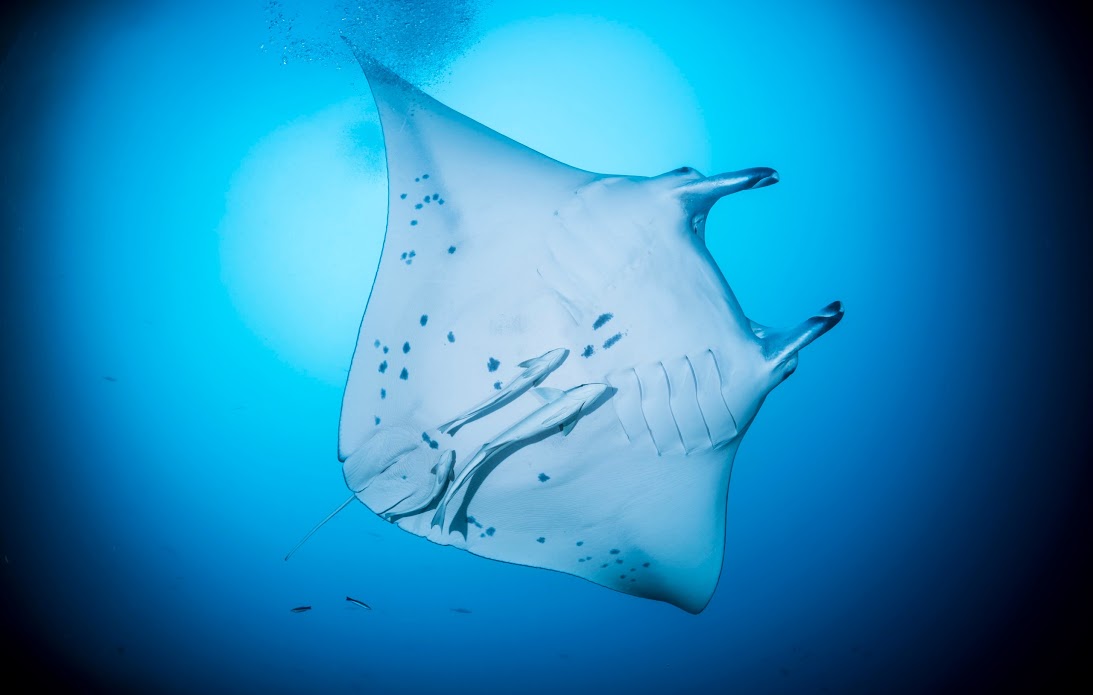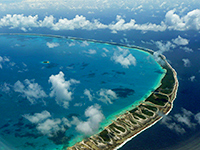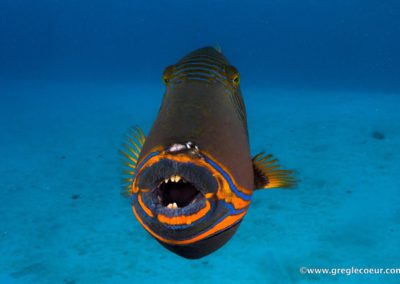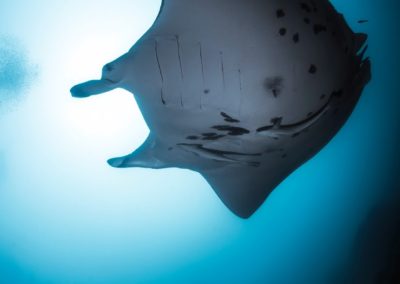The Old Pearl Farm, Tikehau
At 08:30am. The TOPDIVE’s aluminium boat came directly to pick me up on the beach of my pension, the Tikehau village. There were already three other divers on board, a diving instructor and our boat skipper, Jean-Paul. All equipment was prepped and ready on the boat.
The Tikehau TOPDIVE dive center is located in the Tikehau Pearl Beach resort, on an isolated motu. Antoinette, another diving instructor, contacted me the night of my arrival to ask me what equipment I needed for my dive.

The Manta ray
There are more than a hundred Mantas birostris living in the Tikehau lagoon!
Once aboard, Vincent presented the program for that morning – two successive fun dives. As a first dive site, we headed towards the middle of the lagoon to the “Old pearl farm”. After 10 minutes by boat, we arrived at a shallow dive site where manta rays were normally known to get their “cleaning”. This symbiotic relationship normally allow smaller fish to feed off various micro-organisms on the Mantas bodies There are more than a hundred Mantas birostris living in the Tikehau lagoon! We at least hoped to get to see some of them … The boat slowed upon approaching the coral formation rising from the north. Some dark spots broke with the white sandy bottom. Was it a manta ray, I wonder? Unfortunately not, it turned out to be just some coral heads scattered on the sand.
 We reached the point of a submerged coral plateau. Clearer dark spot stood out. We immediately recognized a beautiful manta ray with its two white “devil-like” horns. Such a site to behold! Then, a second ray appears, moving around an adjacent coral head. Somehow, they seemed to want their presence know as we arrived. Jean-Paul drives us about 330ft away to the south to anchor the boat. The dive site was shallow at 10ft. We could easily observe the manta rays moving in the clear water. These gigantic manta rays circled in a spiral around the corals where cleaner wrasses have made their home. There, the coral heads are considered as cleaning stations for mantas and other fish. Each one comes here to be cleaned by bicolored cleaner wrasses, bluestreaked cleaner wrasses or red-lip cleaner wrasses.
We reached the point of a submerged coral plateau. Clearer dark spot stood out. We immediately recognized a beautiful manta ray with its two white “devil-like” horns. Such a site to behold! Then, a second ray appears, moving around an adjacent coral head. Somehow, they seemed to want their presence know as we arrived. Jean-Paul drives us about 330ft away to the south to anchor the boat. The dive site was shallow at 10ft. We could easily observe the manta rays moving in the clear water. These gigantic manta rays circled in a spiral around the corals where cleaner wrasses have made their home. There, the coral heads are considered as cleaning stations for mantas and other fish. Each one comes here to be cleaned by bicolored cleaner wrasses, bluestreaked cleaner wrasses or red-lip cleaner wrasses.
“ We stayed immobile for around 25 minutes, admiring this majestic animal. A perfect dive site for an introductory dive… with mantas as a bonus! ”
It seemed that each ray had chosen its favorite cleaner. Each individual can be identified from the spots on its belly. The observation is easy and the photo shooting is sensational. We knelt down on the sandy bottom to avoid silting up the area, thus limiting visibility… We stayed immobile for around 25 minutes, admiring this majestic animal. A perfect dive site for an introductory dive…with mantas as a bonus!
Moving on to the next coral head around 30 ft away, we admired 3 other rays in single line. They glided over our heads carelessly as though they were used to our presence.
Sometimes, the manta ray performs loops like an airplane with its mouth wide open and horns spread out ready to gobble up as much plankton as possible. This rich lagoon is a known divesites even inspite of its limited visibility, reduced due to the important concentration of plankton.
In addition to the inoffensive « devilfish » (manta ray) we admire minuscule nudibranchs in the fray. We also notice a lot of anthias and juvenile of Damselfish twirling around the Acropora (also called the “Reef builders”). All these small alevins seemed secure hidden in the coral. Some triggerfish, moray eels, groupers and blacktip sharks may also cross your path during this easy dive.
Back on the boat, comparing our impressions of the dive, we felt quite content and excited. With barely enough time to catch our breath, we set off anew towards the Tuheiava pass for our next dive… adventure to be continued!
© Photos : V.Truchet, G.Lecoeur



0 Comments